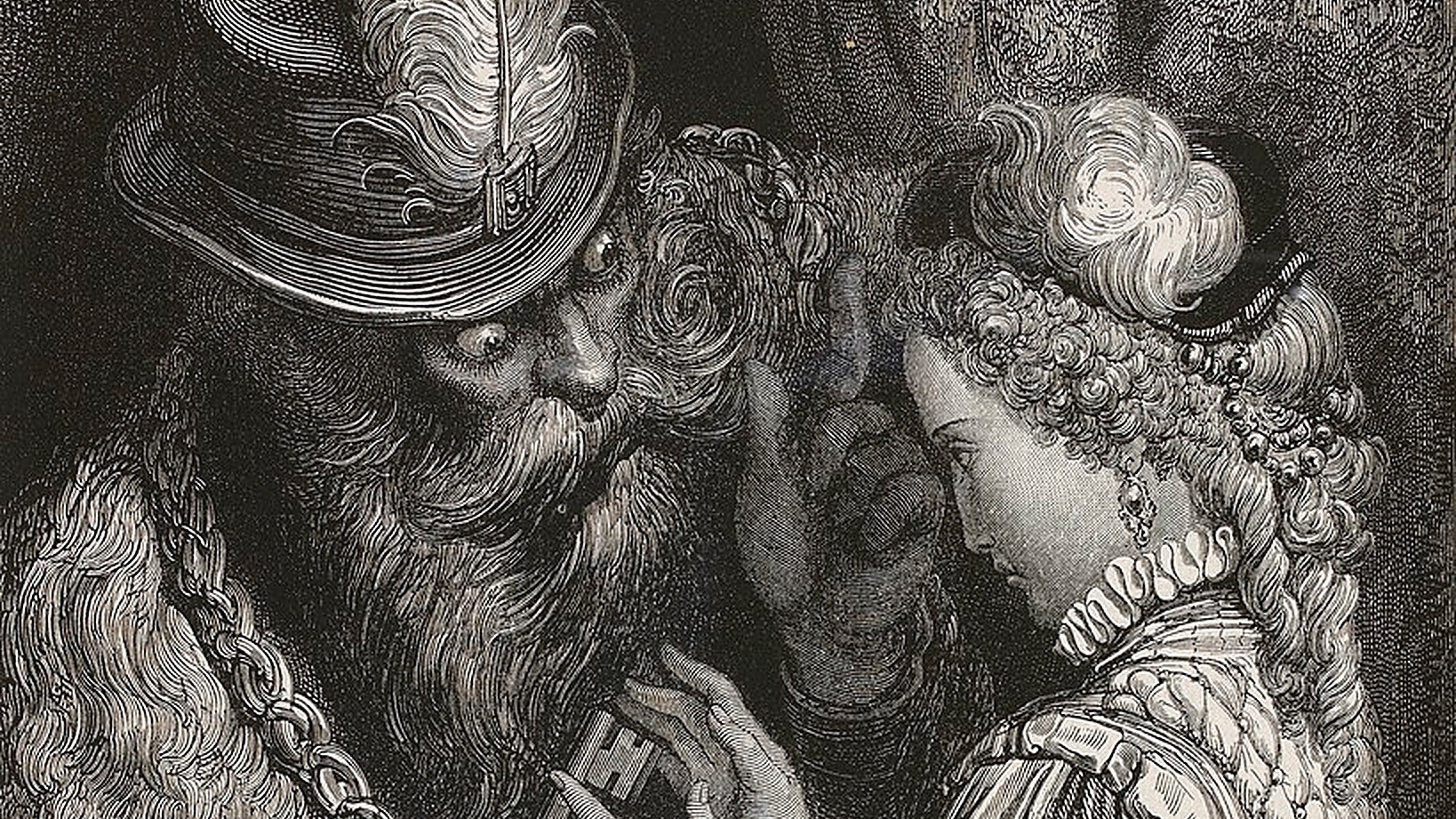Béla Bartók’s symbolist opera in one act, Bluebeard’s Castle, begins with a spoken prologue which asks, “Where is the stage, outside us or within us?”
What follows is a chilling psychological horror story, based on an account of a French fairy tale by Charles Perrault. The Gothic drama, set in a gloomy castle with seven locked doors, involves only two characters, the mysterious Duke Bluebeard and his young wife, Judith. Here is a synopsis provided by the Metropolitan Opera:
Judith has come to live with Bluebeard, having left her family home and her peaceful, ordered existence. Bluebeard’s secret mesmerizes her—she knows the terrifying rumors, she fears she may be on a road of no return, yet she decides to enter his home. The door closes. Judith confesses her love for Bluebeard, believing that it will change him and light up his gloomy home. She repeats her profession of love like a mantra as she demands that the doors to seven rooms be opened. The first one is a torture chamber, the second an armory. These rooms fill her with terror. The next doors conceal a treasury and a garden. Then Bluebeard shows his empire to Judith. She sees blood everywhere: on jewels, weapons, flowers. She doesn’t want to defer to Bluebeard who says, “Love me” and “Ask no questions.” Judith responds that she loves him and wants him to open up to her, reveal his inner self, uncover his fears. She demands that all the doors be opened. The sixth door, which conceals a sea of tears, is where Judith reaches the limit of knowledge. That leaves the seventh door. Behind it is a space beyond life, on the border of life and death. There are concealed Bluebeard’s previous wives. Passing through the seventh door, Judith joins them. She is made a part of Bluebeard’s space forever. The circle of her journey closes.
An early work written in 1911, Bluebeard’s Castle was Bartók’s only opera. Five years earlier, the poet Béla Balázs had accompanied Bartók on one of his expeditions into the Hungarian countryside to document his native folk music. Balázs’ masterful libretto for Bluebeard’s Castle mirrors the eight syllable lines of Hungarian folk ballads. (Jan Smaczny). Upon its completion, the opera was submitted to the Ferenc Erkel Prize Competition, but was rejected on the grounds that it was not sufficiently “theatrical.” (It is likely that the panel of musical judges never saw Bartók’s entry). The premiere at the Royal Hungarian Opera House in Budapest did not occur until May 24, 1918.
The dissonant minor second is a recurring interval throughout the score. It is the jarring motif which accompanies Judith’s repeated encounters with blood in the castle. With occasional moments of polytonality (multiple keys heard simultaneously), the work follows a symmetrical harmonic scheme, beginning in a modal F-sharp, modulating to C, and returning to F-sharp. Some commentators have suggested that the two keys represent a dichotomy between darkness and light. With hushed, shadowy low strings, the opera’s final moments recede back into the darkness of the opening. This symmetrical or palindromic form became a staple of Bartók’s later works, such as the Fourth String Quartet. The large orchestra is integral to the drama. Its instrumental voices take the form of swirling spirits which beckon us forward. They bring to life magical visions and provide lamenting commentary.
Here is Georg Solti’s 1981 performance with the London Philharmonic Orchestra and Sylvia Sass (Judith) and Kolos Kovacs (Bluebeard):
Recordings
- Bartók: Bluebeard’s Castle, Sz. 48, Georg Solti, London Philharmonic Orchestra, Sylvia Sass, Kolos Kovacs Amazon
- Adam Fischer, Elizabeth Lawrence, Robert Lloyd, London Philharmonic Orchestra (1988 film)
Featured Image: “Bluebeard and Judith,” Gustave Doré


There may be more occult symbolism in this one than meets the eye.
Hi Peter, I assume that you are referring to the staging and not to the score itself. I would be interested to hear more about your observations.